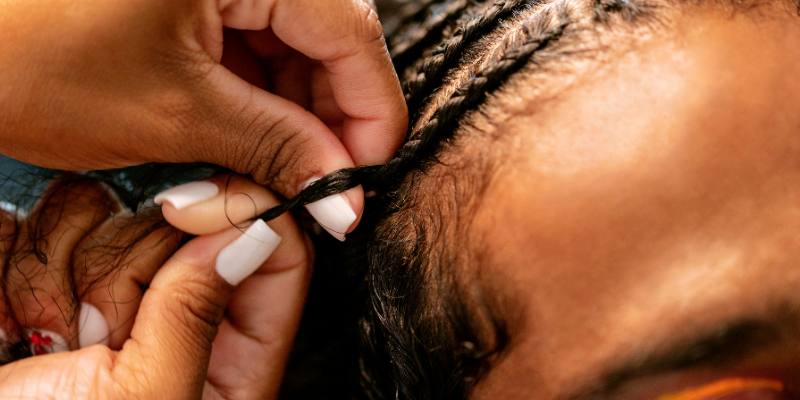Hair loss is a common concern affecting millions worldwide, transcending age, gender, and ethnicity.
While some hair shedding is normal throughout a person’s life, excessive or persistent hair loss can be distressing and indicative of underlying health issues.
Understanding the diverse causes of hair loss is paramount for effective management and treatment.
Androgenetic Alopecia (Male/Female Pattern Baldness)
Androgenetic alopecia, or male/female pattern baldness, is the most prevalent cause of hair loss, often genetically inherited.
It results in gradual thinning of hair over time, typically starting at the temples or crown in men and leading to diffuse thinning in women.
While the exact cause is complex, it is primarily attributed to the effects of androgens on susceptible hair follicles.

Alopecia Areata
Alopecia areata is an autoimmune disorder characterised by patchy hair loss on the scalp, face, or body.
It occurs when the immune system mistakenly attacks hair follicles, resulting in sudden and unpredictable hair loss.
While the exact triggers are not fully understood, genetics, environmental factors, and immune dysregulation are believed to play a role in its development.
Telogen Effluvium
Telogen effluvium is a transient form of hair loss triggered by factors such as stress, illness, hormonal changes, or nutritional deficiencies.
It occurs when a significant number of hair follicles prematurely enter the resting (telogen) phase of the hair growth cycle, resulting in increased shedding.
The cause involves disruptions to the normal hair growth cycle, leading to a shift towards increased shedding and decreased hair density.
Trichotillomania
Trichotillomania is a compulsive hair-pulling disorder driven by the urge to pull out one's hair, leading to hair loss and bald patches.
It is often associated with stress, anxiety, or underlying psychological issues.
While the exact cause is not fully understood, it is believed to involve a combination of genetic, environmental, and psychological factors.

Traction Alopecia
Traction alopecia arises from persistent pulling or tension on the hair, commonly due to tight hairstyles, hair extensions, or hair accessories.
Over time, this can damage hair follicles and lead to hair loss, particularly along the hairline or in areas subjected to repetitive pulling.
The cause involves mechanical trauma to the hair follicles, leading to inflammation, miniaturisation, and eventual hair loss.
Cicatricial Alopecia
Cicatricial alopecia, or scarring alopecia, occurs when inflammation or injury to the hair follicles leads to scarring and irreversible hair loss.
It can stem from conditions like lupus, lichen planopilaris, or scalp trauma.
The cause involves the destruction of hair follicles by inflammatory cells, leading to fibrosis and scarring of the scalp tissue.
Anagen Effluvium
Anagen effluvium refers to hair loss during the hair growth cycle's anagen (growth) phase.
It commonly occurs as a side effect of chemotherapy or radiation therapy, which targets rapidly dividing cells, including hair follicles.
The cause involves inhibiting hair cell division and proliferation, leading to premature termination of the hair growth cycle and subsequent hair loss.
Hypothyroidism-related Hair Loss
Hypothyroidism, characterised by an underactive thyroid gland, can disrupt the hair growth cycle, leading to thinning hair or hair loss. T
hyroid hormones play a vital role in regulating metabolism and hair growth so imbalances can affect hair health.
The cause involves alterations in hormone levels, which can impair hair follicle function and lead to hair thinning or shedding.

Nutritional Deficiencies
Deficiencies in essential nutrients such as iron, vitamin D, and biotin can impact hair health and contribute to hair loss.
Adequate intake of these nutrients is essential for supporting healthy hair growth and maintaining follicle function. The cause involves the role of these nutrients in various metabolic processes,
including DNA synthesis, cell division, and protein synthesis, which are critical for hair follicle function and growth.
Lupus-related Hair Loss
Lupus is an autoimmune disease that can affect various organs and tissues, including the skin and hair follicles.
Hair loss is a common symptom of lupus, often occurring in patches and accompanied by other systemic symptoms.
The cause involves immune-mediated inflammation of the hair follicles, leading to hair thinning or shedding.
Scalp Infections
Scalp infections, such as fungal infections like tinea capitis or bacterial infections like folliculitis, can cause inflammation and damage to hair follicles, resulting in hair loss.
Proper diagnosis and treatment of the underlying infection are essential for resolving hair loss.
The cause involves the invasion of hair follicles by pathogenic microorganisms, leading to inflammation, follicular damage, and hair loss.

Medication-induced Hair Loss
Certain medications, including antidepressants, blood thinners, and chemotherapy drugs, can cause hair loss as a side effect.
Depending on the medication and individual response, hair loss may be temporary or permanent.
The cause varies depending on the medication but may involve disruption of the hair growth cycle, interference with hormone levels, or direct toxicity to hair follicles.
Tinea Capitis
Tinea capitis, or scalp ringworm, is a fungal infection affecting the scalp and hair follicles, leading to hair loss, scaling, and inflammation.
Antifungal medications are typically prescribed to treat the infection and promote hair regrowth.
The cause involves the invasion of the scalp by dermatophyte fungi, leading to inflammation, follicular damage, and hair loss.
Lichen Planopilaris
Lichen planopilaris is an inflammatory condition affecting the hair follicles, leading to scarring and permanent hair loss.
It presents as small, flat-topped, itchy bumps on the scalp and can cause hair thinning or bald patches.
The cause involves immune-mediated inflammation of the hair follicles, leading to destruction and scarring of the follicular tissue.

Postpartum Hair Loss
Postpartum hair loss commonly affects many women in the months following childbirth.
Hormonal changes during pregnancy and the postpartum period can disrupt the hair growth cycle, leading to excessive shedding and temporary hair loss. The cause of postpartum hair loss involves fluctuations in hormone levels, particularly estrogen and progesterone, which can impact the duration of the hair growth cycle and lead to increased shedding postpartum.
Hair loss is a multifaceted issue with various underlying causes, ranging from genetic predisposition and autoimmune conditions to hormonal imbalances, nutritional deficiencies, infections, medications, and psychological factors. Understanding the root cause of hair loss is crucial for developing effective treatment strategies and restoring hair health.
If you're experiencing hair loss, it's essential to consult with a healthcare professional or dermatologist for an accurate diagnosis and personalized treatment recommendations tailored to your specific needs.
By addressing the underlying cause and implementing targeted interventions, individuals can take proactive steps towards preserving and regaining their hair health.

